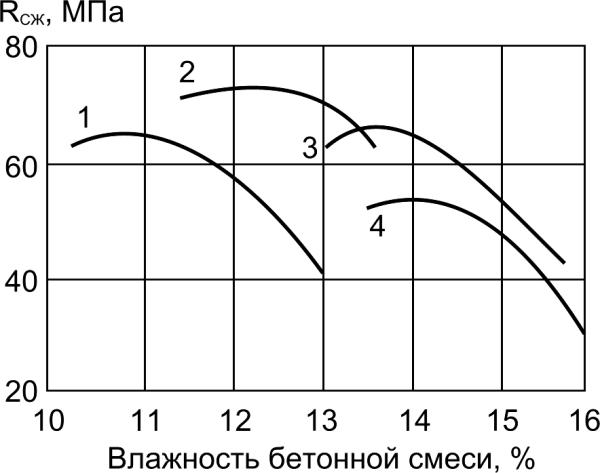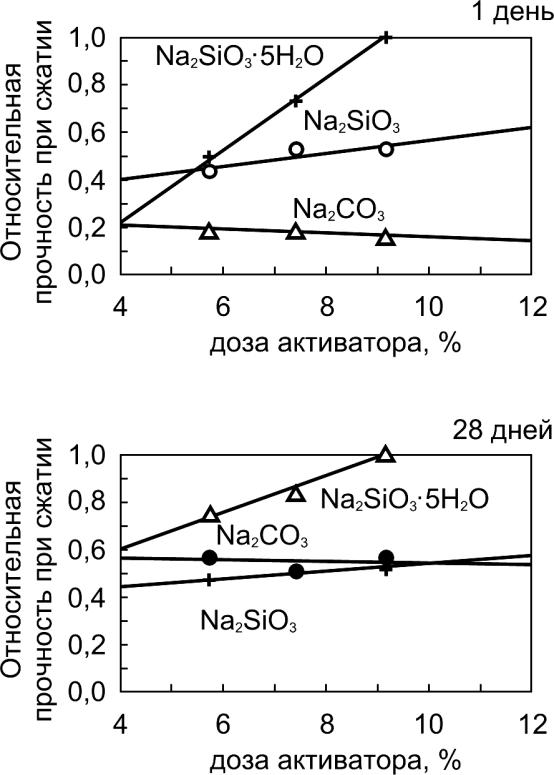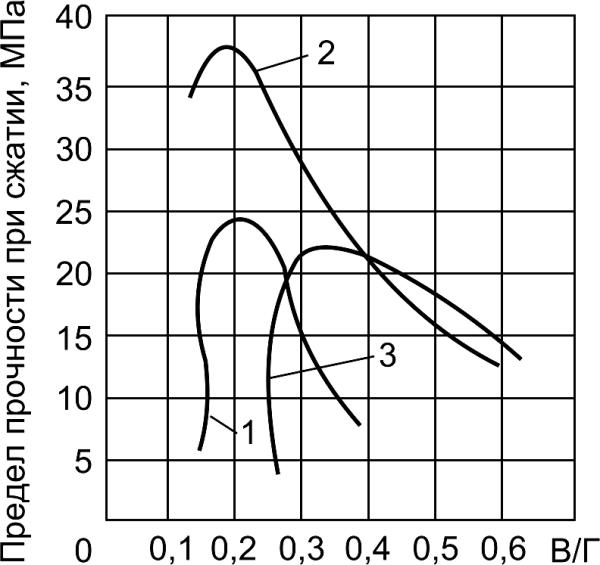.
4)
191





Ash is divided on high-calcium (СаО>20%) and low-calcium (СаО<20%).
Crystalline phases are prevalent for the first one, and glass and amorphous-like
clay material is dominant for the second one. High-calcium ash can be divided
on low-sulfate (SО <5%), obtained by coal and peat burning and sulfate
3
(SО >5%) obtained by shale's burning.
3
Slags and ash acquire ability to harden at alkaline, line, sulfate and combined
types of activation. Slag and fly ash materials with different intensity harden in
normal conditions and at steam curing depending on their mineralogical
composition, chemical composition and active phases content, fineness, type
and concentration of activator.
As activators of slag and fly-ash binders are used anhydrous lime, calcium
sulphate hydrate or hemihydrate are used. Application of hydrated lime gives
worse results than lump quicklime.
Cellular, fine-grained, light-weight and heavy-weight concrete are
manufactured on the basis of slag and fly ash binders. Comparatively high
quality of these materials is obtained at steam curing.
192





10.3. Slag-alkaline concrete
Concretes for which common feature is slag-alkaline binders application are
included into group of slag-alkaline concrete. Fundamentals of theory and
technology of National University of Construction and Architecture (Kiev, Ukraine)
have been worked out by V. Glukhovsky.
Approximate composition of heavy-weight concrete, %: ground granulated slag 15...30; alkaline component – 0.5...1.5; aggregates - 70...85.
Physical and mechanical properties of slag-alkaline concrete can vary with
wide range by selecting raw materials, varying concrete mix composition and
applying different technological processes. Parameters of the most of these
type concrete properties are close to parameters of cement concrete and in
some instances they can be appreciably higher.
Until present almost forty years experience is gathered in application of slagalkaline concrete in construction industry. There is shown effectiveness of
production of wide range constructions, assigned for service in different
including hard conditions.
193







1 day
1.0
R
e
c, MPa
0.8
ressiv
0.6
gth 0.4
comp stren 0.2
0.0
Relative
Activator dosage, %
28 days
e
1.0
Humidity of concrete mixture, %
0.8
Fig. 10.3. Relationship between slag alkaline
ressiv
0.6
concrete compressive strength (R
gth
c), humidity of
mixture and weight part of clayey particles in the
comp
0.4
aggregate:
stren 0.2
1 – weight part of clayey particles in the aggregate 1.2 %;
0.0
2 – idem 5.2 %; 3 – idem 6.4 %; 4 – idem 8.8 %
Relative
(according to G.Skurchinskaya data)
Activator dosage, %
Fig.10.4. Relative strength of alkaline
slag binder depending on type and
content of activator
(from I.Blackmeyer data)
194






10.4. Gypsum concrete
Gypsum concrete is concrete produced on the basis of gypsum binders. Building
blocks, masonry blocks, panels, assigned particularly for internal walls and
crosswalls are produced from gypsum concrete. Application area of such
concrete is limited mostly because of their insufficient water resistance.
According to data obtained by
A.Volgensky and А.Ferronskaya, the
effect of water-gypsum ratio (W/G) on
th, MPa
gypsum concrete strength is similar to
ng
effect of water-cement ratio on cement
stre
concrete strength (Fig.10.5).
ssivere
mp
Co
0.1 0.2 0.3 0.4 0.5 0.6 W/G
Fig.10.5. Influence of water-gypsum
ratio (W/G) on gypsum strength:
2-α-hemihydrate gypsum;
1, 3 - β-hemihydrate gypsum.
195





Water-gypsum ratio depends on gypsum binder type, temperature of mixing
water and method of forming of elements.
There are obtained concrete with strength 5-10 MPa on the basis of gypsum
binder. Application of high-strength gypsum, anhydrous gypsum and estrich
gypsum permits to increase strength up to 20 MPа. Concrete strength at
application of composite gypsum-cement-pozzolanic and gypsum-slag-cementpozzolanic binders on the basis of alabaster is 7.5-20 MPa, on the basis of alpha
gypsum is 15-40 MPa.
Quality and nature of aggregates make significant influence on strength of
gypsum concrete.
10.5 Mortars
Lime, gypsum, cement and composite (cement-lime, cement-clay) mortars are
the most common in construction.
Basic properties of mortars are workability and water-retaining capacity.
Providing of required workability of mortar mixtures without segregation can be
reached by adding of plastizing admixtures and fillers.
196





Water-retaining capacity prevents segregation of mortar mixture. In view there,
are reduced water-binder ratio (due to right proportion), ultra-fine mineral fillers,
plastizing and special water-retaining admixtures.
For strength forecasting of cement-lime mortars are widely used N.Popov
formula. At pouring on dense basement, mortars strength (R ) is calculated by
m
formula:
Rm=0.25Rcem(C/W-0.4), (10.5)
Where R
– strength of cement, MPa; C/W – cement-water ratio.
cem
At water drawoff by porous base in the mortars with different C/W,
strength of mortars (R ) can be calculated as follows:
m
Rm=KRcem(C-0.05)+4, (10.6)
where К - coefficient of sand quality: for coarse sand К=2.2; medium sand
К=1.8; fine sand К=1.4; C - cement content.
197





Composites of mortars are selected by tables or calculation and specified by
experimental way in the context of specific materials.
Strength increase of masonry mortars at cold-weather construction can be
provided by adding of a series of chemical admixture.
10.6 Dry pack mixes
Modern construction industry is characterized by more wide application of dry
pack mixes, accurately batched and mixed in plant conditions mortars and
concrete mixes, with adding water at building site.
At construction work effectiveness of dry pack mixes is demonstrated in high
level of mechanization, significant reduction of construction terms, decreasing
labour content and working costs, providing high quality.
Dry pack mixes are classified by:
- main purpose (type of work);
- type of binder in the mixture;
- modification level of the mixture by admixtures;
- the most significant feature in hardened state;
- conditions of application.
198





There are identified different mixes by purpose: masonry, facing, jointing,
stopping, plastering, gluing, sealing mixes etc.; by type of basic binder –
gypsum, anhydrate, lime, magnesium, cement, cement-lime, polymer etc.; by
modification level – cost-effective, standard, high-quality; by characteristic
feature in hardened state - adhesive, weather-proof, fast-hardening, waterproof,
frostproof, high-strength, self-leveling, elastic etc.; by application conditions –
hand and machine coating, for porous materials etc.
The same mix can be often used at different construction.
Adjustment of technological and performance properties of dry pack mixes is
reached by adding different chemical admixtures
Thickening, dispersing, foaming, defoaming, water-repelling, conservative
agents etc. are included into the complex of special chemical admixtures.
199














































